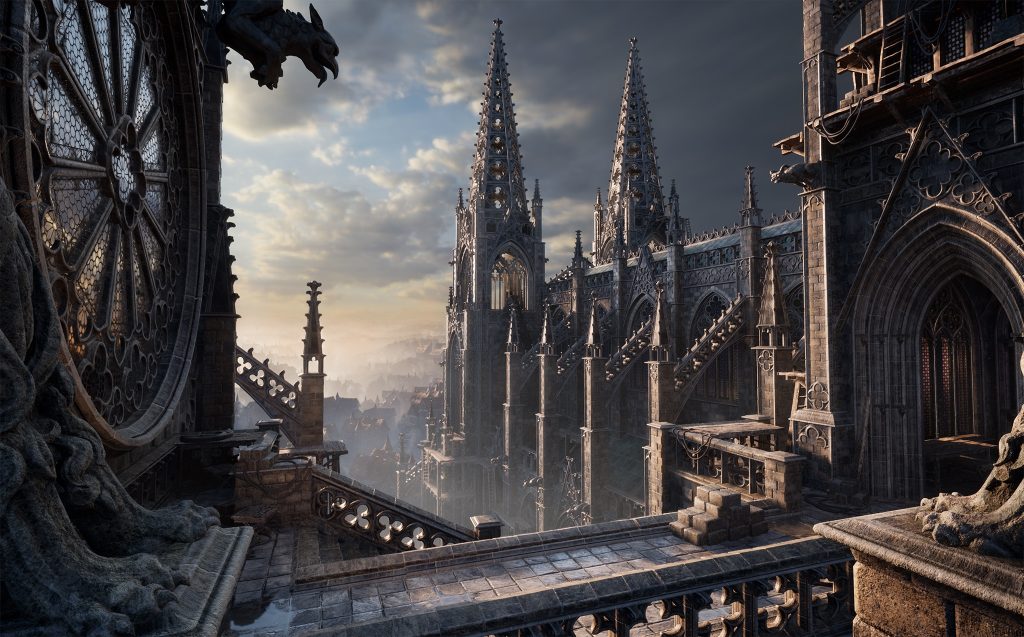The ‘early’ man was a free animal. They used to roam around the wilderness; a true wanderlust spirit. Evolution began when their brains could comprehend their surroundings. However, it did nothing to curb their fear of the unknown. Hence, they shielded themselves; restricted within four walls. This was their first tête-à-tête with architecture. Soon, they erected wonderful structures, blazing in all their glory. Architecture didn’t simply connote functionality anymore, it also meant ornamenting. Whether it is the pyramids, Roman cathedrals, or Gothic architecture, these buildings were an amalgamation of reason and beauty.
What is Gothic Architecture?
The term, ‘Gothic’ is borrowed from the nomadic Germanic tribe, Goths, who emerged victorious after a tussle with the Romans between 300 AD – 400 AD. As a result, they lay waste to everything that came before, replacing them with new buildings. Therefore, for the Romans, the word ’Goth’ was derogatory. It must be interesting to note that even though the Gothic Wars were etched into early history, Gothic Architecture did not officially commence before the 12th century.
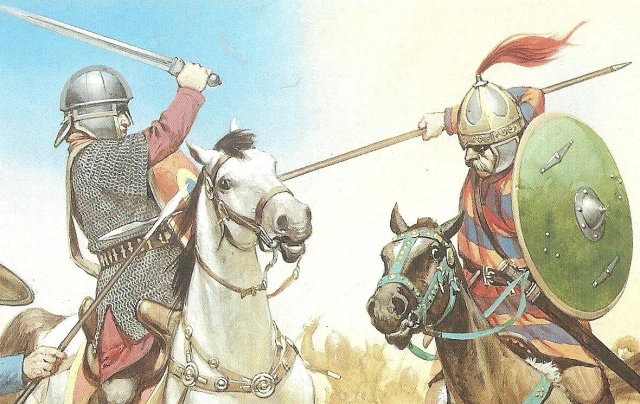
The Need for Gothic Architecture
As is the way of the world, Gothic Architecture was influenced by Romanesque Architecture; its predecessor. One can easily see the frequent nod to Islamic Architecture. At the time, there was a huge boom in the European population. A bigger population brought in more wealth. Gothic Architecture became prominent for two reasons. The first was to express the splendour of the European cities. The second was to accommodate the growing numbers of tourists, pilgrims, and the commoners.
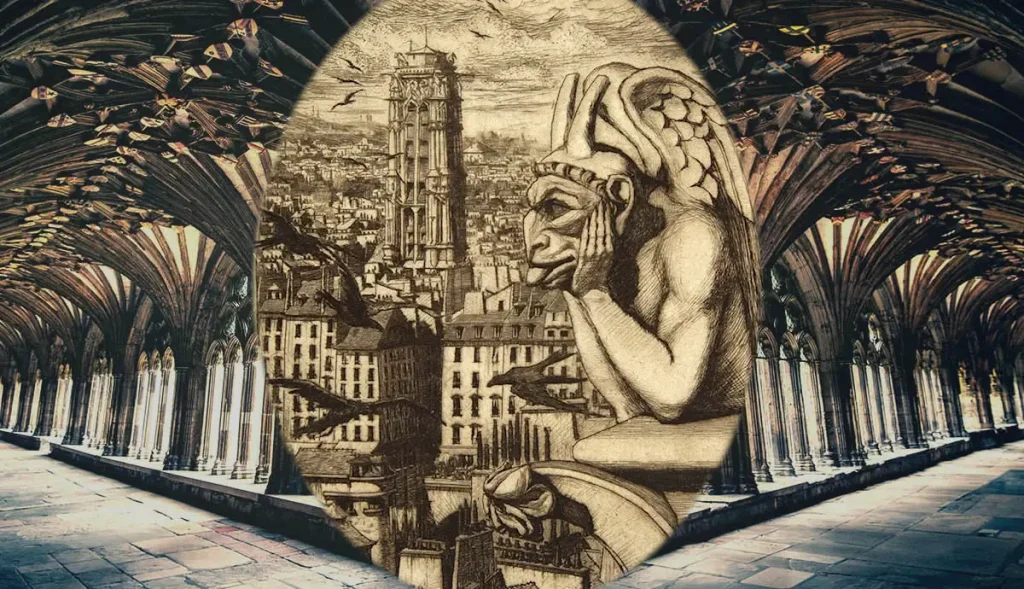
At the time, this style of architecture was known as ‘Opus Francigenum’ or ‘French Work’, clearly indicating its journey from medieval France to the rest of Europe. The first building which stood as a testament to the grandeur of Gothic style Architecture and its elements was The Basilica Church of Saint-Denis; the prime of Gothic Architecture examples. But what are the Gothic Architecture characteristics? Read on to find out.
Gothic Architecture Phases
Evolution isn’t a phenomenon experienced in the blink of an eye. It happens over a long period. The same is the case with Gothic Architecture. These phases were informed by the regional nuances and structural innovations. Only through constant experimentation, implementation, and diversification did the following three broad phases come into being.
Early Gothic Architecture
The movement signified the commencing of Gothic Architecture. It is estimated to have originated between the 1130s to the 1240s in the Île-de-France region of France. It included all quintessential structural elements – ribbed vaults, flying buttresses, pointed arch, tracery, and an emphasis on verticality. Early Gothic Architecture examples include Notre-Dame Cathedral (France), and Salisbury Cathedral (England). The Canterbury Cathedral (England) is noted as the first Early English Gothic landmark.
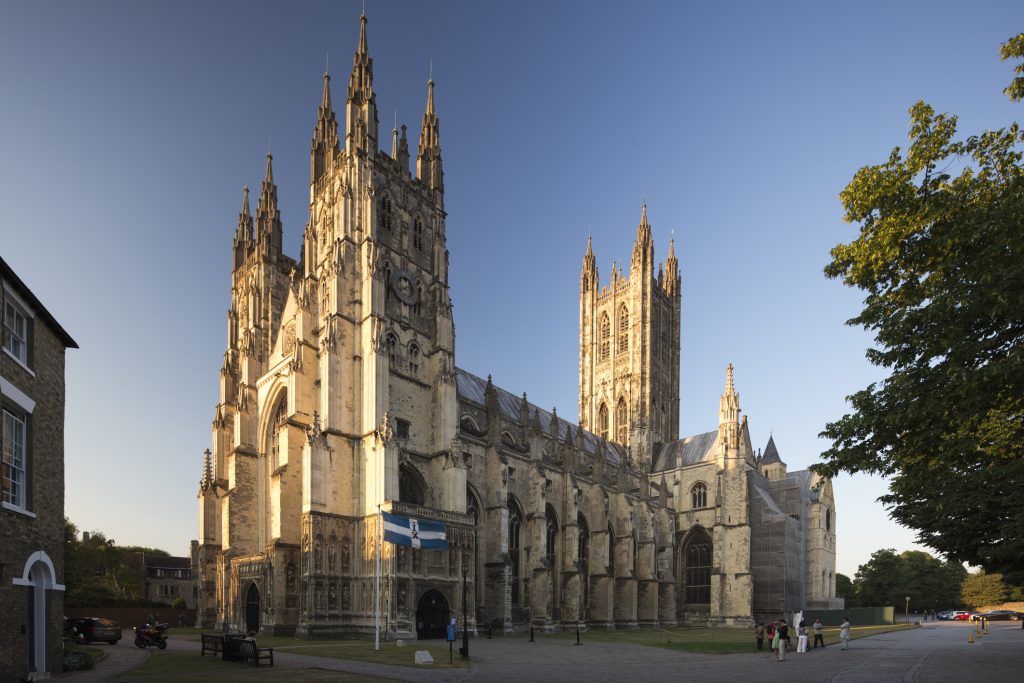
Courtesy – Country Life
The Early Gothic Architecture had several substyles. They include the following.
- French Early Gothic Style Architecture: This Gothic architecture substyle included the typical structural elements of the style. Examples include Notre Dame Cathedral and the Basilica Church of Saint-Denis.
- German Early Gothic Style Architecture: This style amalgamates Roman elements (thick walls) and Gothic Architecture features (pointed arches). Examples include Bamberg Cathedral and Liebfrauenkirche.
- Lancet Early Gothic Style Architecture: This style, originating in England, focused on the elongation and verticality dictated by the pointed arches. The use of elaborate, narrow, and slender windows was now seen. Notable examples include Salisbury Cathedral and Westminster Abbey’s English Chapter.
- Sicilian Early Gothic Style Architecture: This style, prevalent in Sicily was a fusion between intricate geometric patterns endemic to Islamic Architecture with the pointed arches of the Gothic Architecture, Notable examples include Monreale Cathedral and the Cefalù Cathedral.
High Gothic Architecture
The High Gothic Architecture style took inspiration from its predecessor, the Early Gothic Architecture. It was created between the 1200s and the 1300s (one may see a humongous overlap between the two styles). The style is associated with intricate star-like patterns, longer and higher flying buttresses, sculptural decorations (chimaeras and gargoyles), and frequent use of lancet windows. The priority was given to exquisite ornamentation to elevate the aesthetics of the buildings. The Chartres Cathedral is often considered the first testimony of the style.
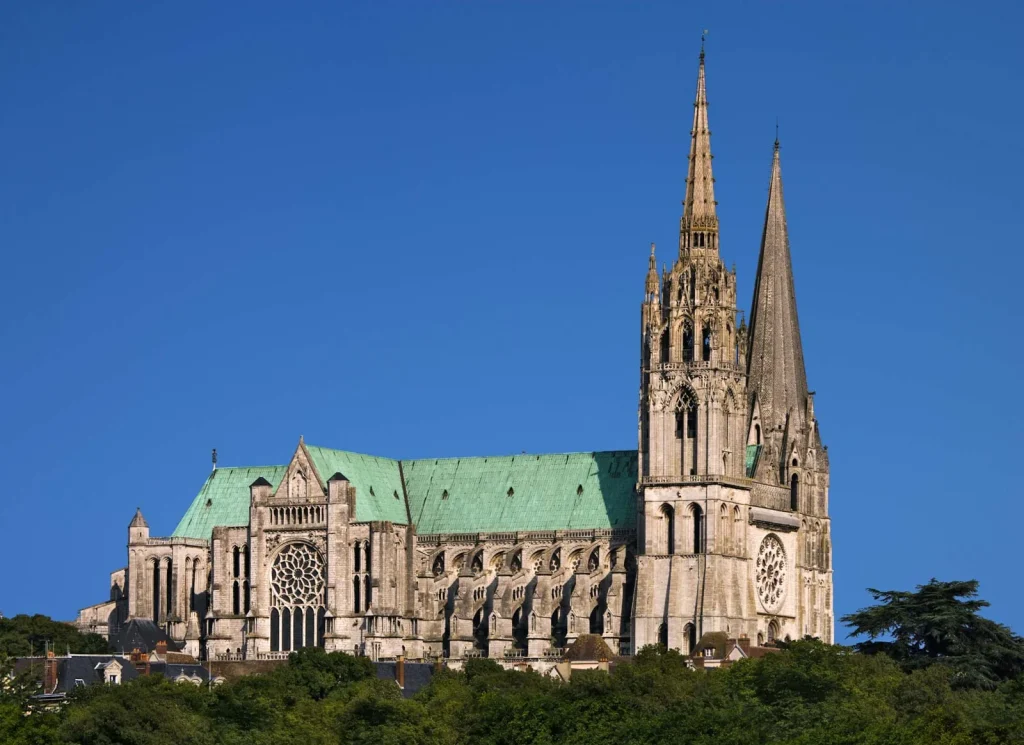
Courtesy – Britannica
It was also divided into three distinct substyles, which are mentioned below.
- Decorated High Gothic Style Architecture: Prevalent in the early 14th century, this style is characterized by the recurring usage of window tracery and ornamental mouldings. Prime examples include the Cathedral Church of the Holy and Undivided Trinity and the Exeter Cathedral.
- Flamboyant High Gothic Style Architecture: The flamboyant style originated in the late 14th century. It included flame-like curvilinear tracery patterns in the windows for an exuberant appeal. The Church of Saint-Maclou and Sainte-Chapelle de Vincennes are notable examples of the style.
- Rayonnant High Gothic Style Architecture: The Rayonnant style originated between the mid-13th century and to 14th century. This style consisted of stained windows and glazed walls. The sharp-edged traceries were reinforced with iron and other alloys. Prime examples include Westminster Abbey’s Lady Chapel and York Minister.
Late Gothic Architecture
The Late Gothic Architecture revitalized the elements of its predecessor, especially a second iteration of the flamboyant style. The architectural style was popular between the 1300s and the early 1500s. The use of functional and stylistic elements such as pinnacles, crockets, and finials was prevalent. Although the core concept to further the vertical narrative remained, the movement ushered into a new age of complex curves and sinuous structures. The craftsmanship can still be observed at Roskilde Cathedral (Denmark), St. Stephen’s Cathedral (Austria), and Palais des Papes (France). St. Vitus Cathedral, Prague is usually considered the first marvel of Late Gothic Style Architecture.
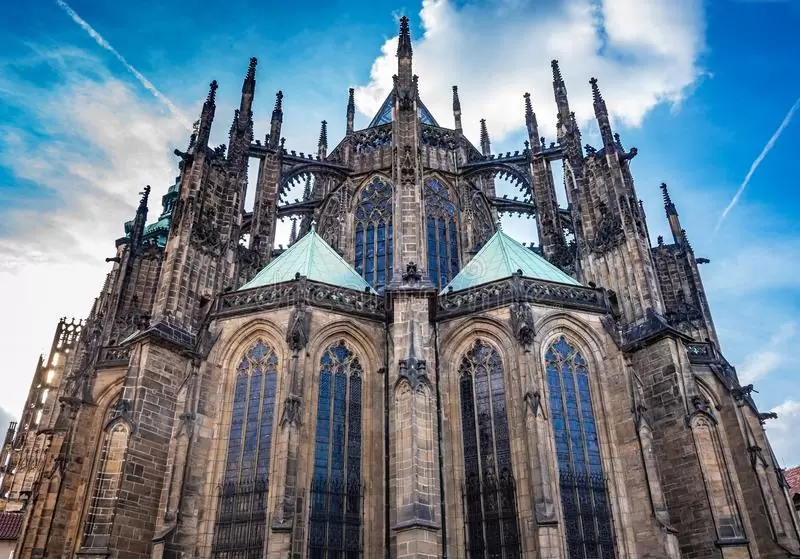
Courtesy – Prague.org
The style entails several substyles, with the three major briefly discussed below.
- International Flamboyant Late Gothic Style Architecture: Coming from its precursor, the number of ribs grew exponentially, and the sinewy curves, also known as ogees became more prominent. Decorative ribs such as tiercons and liernes and diagonal ribs characterize this style. St. Stephen’s Church and Palais Jacques-Cœur are a testament to this style.
- Isabelline Late Gothic Style Architecture: This style is a blend between the intricate ornamentation of the flamboyant style and the Spanish Mudéjar and Plateresque styles. The Monastery of San Juan de los Reyes and the Segovia Cathedral depict the same.
- Perpendicular Late Gothic Style Architecture: The perpendicular style entails large windows with intricate traceries and vertical lines. A unique feature of this architectural style is the use of equidistant vaulting, resembling a fan. Perpendicular Gothic Architecture examples include Gloucester Cathedral and King’s College Chapel.
Gothic Architecture Elements
I mean, we have all seen horror movies which display grand cathedrals, a hub for the scuffle between good (the Holy Spirit, Jesus Christ, even God himself) and evil (Lucifer, Beelzebub, Mephistopheles). The extensive use of these grand cathedrals in popular culture has connoted Gothic Architecture features as dark, sinister, and mysterious. However, it couldn’t be more far from the truth. The Roman cathedrals of the time were thick-walled and had small windows. Gothic Architecture came and replaced them with thinner walls and bigger windows/slits. This was done by the theological virtues of the light (perhaps they intended to repel evil of all forms).
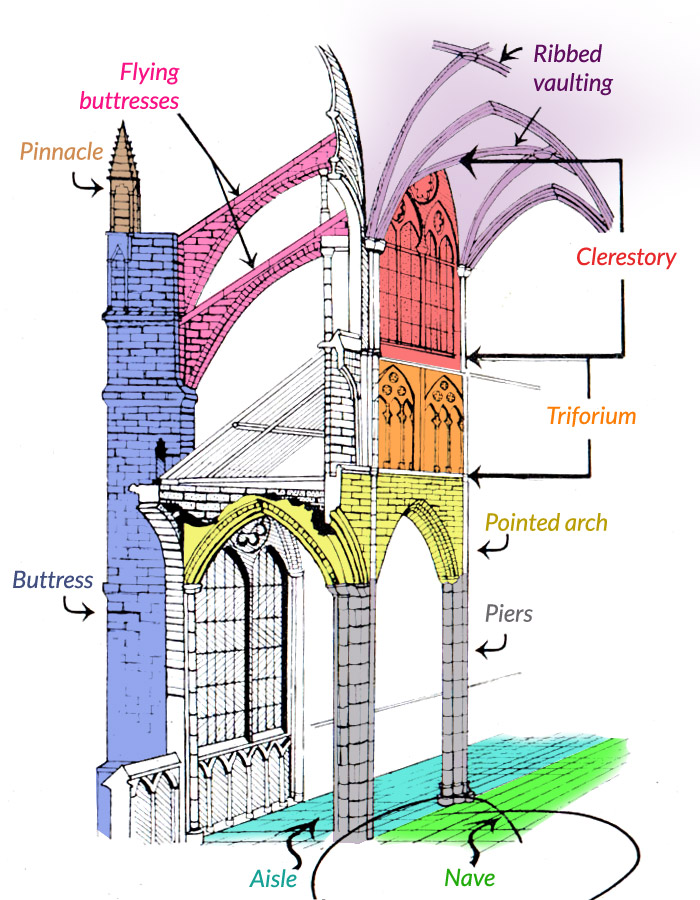
But this is not all. Gothic Architecture features are many, some of them ( which are universal to all buildings designed in the style), mentioned below.
Flying Buttress in Gothic Architecture
Flying buttresses are half arches positioned outside the building which distribute the weight of the roof and the vaulting to another roof or a column/tower via an aisle. They are located on each side of the building and topped with heavy decorations to provide strength and visual appeal. The Romanesque buildings had flying buttresses as well, although stationed beside the building. In Gothic Architecture, flying buttresses developed an arch and the distance grew between them and the roofs. This provided sufficient space for ornamental windows and tracery. It also helped support the prevalent thin walls.
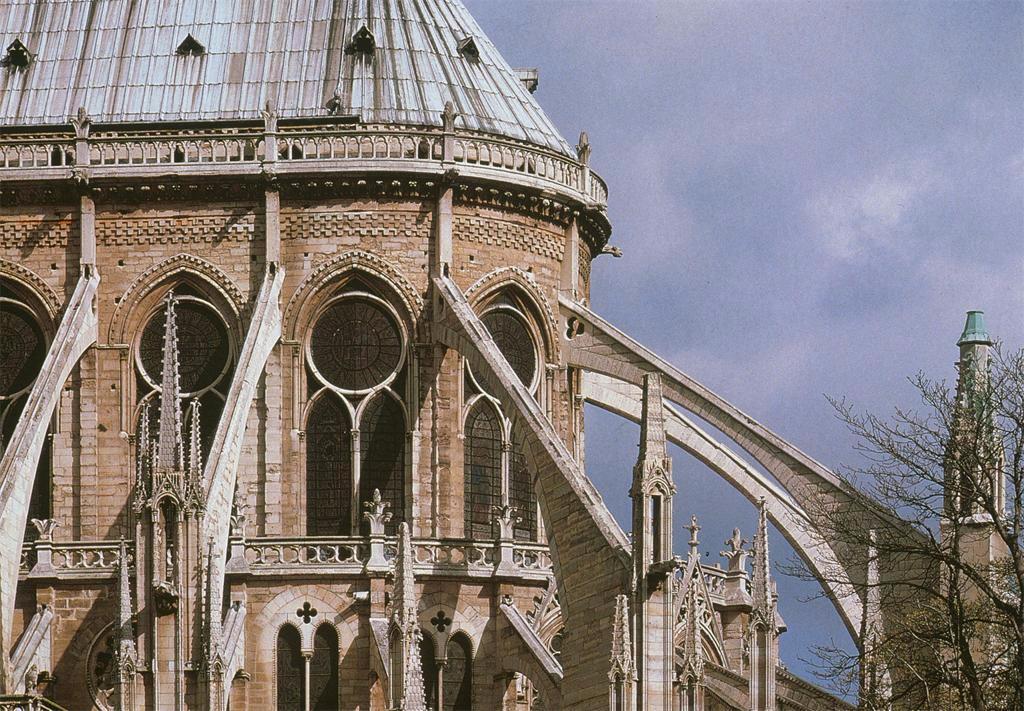
Since there was a downward arch, the buildings could be made taller and structured to efficiently distribute the stress outwards and downwards. The flying buttresses in Gothic architectural structures not only prevent the collapse of the heavy ribbed vaultings but also avoid corrosion caused by rainwater. To improve the aesthetics, supernatural beings (gargoyles and chimaeras) were often used. They served as the end of the rainwater channels, expelling the rainwater far from the building.
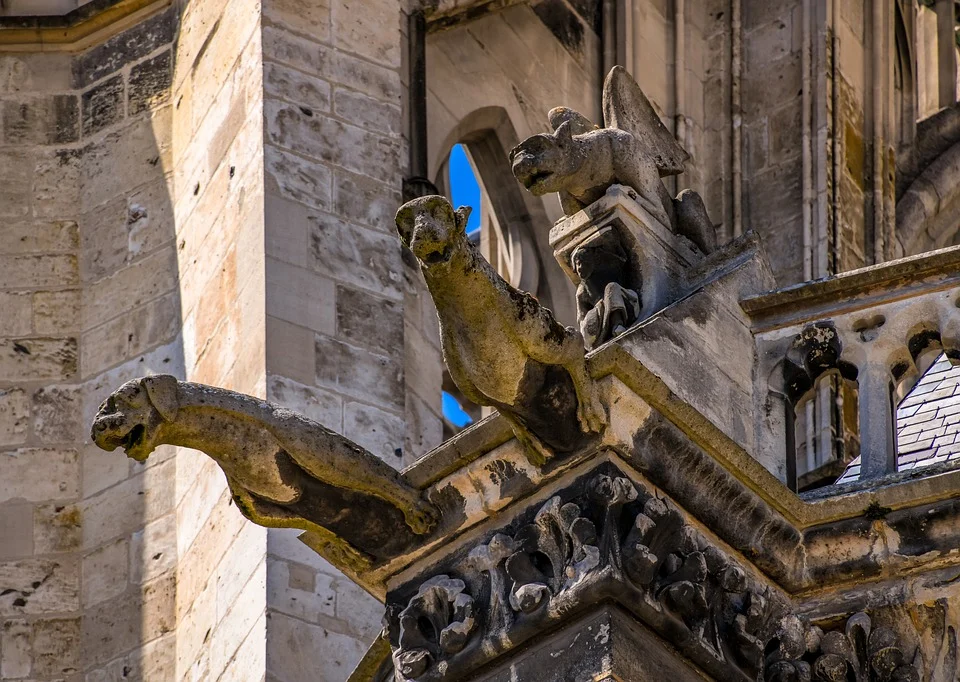
Pointed Arch in Gothic Architecture
The Arch from Gothic Architecture is one of the defining structural elements of the architectural style, replacing the wide and rounded arches of Romanesque architecture. It had both functionality and decorative appeal. But they weren’t original, having been borrowed from Islamic architecture. Since the walls were thinner, the pointed arches in Gothic Architecture could be made vertically taller, displacing the stress outwards and upwards from the walls. It also made room for the creation of ribbed vaulting and more frequent piers and columns.
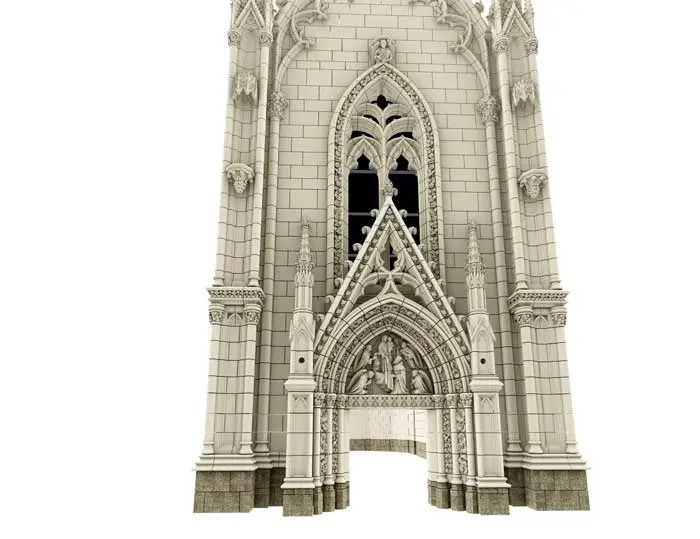
The structural use of pointed arches in Gothic Architecture was a great addition to the rose windows and traceries, which could help more natural light to seep in. Now, the transverse vaults were at the same length as those of the diagonal vaults, which paved the way for ribbed vaulting. Since these arches from Gothic architecture elongated the cathedrals, they were a denotation of spiritual aspiration; and a place to be closer to the heavenly powers. At times, these arches were decorated with vivid patterns ranging from flowers (as seen in the Flamboyant Gothic Architecture) and cabbage-shaped patterns.
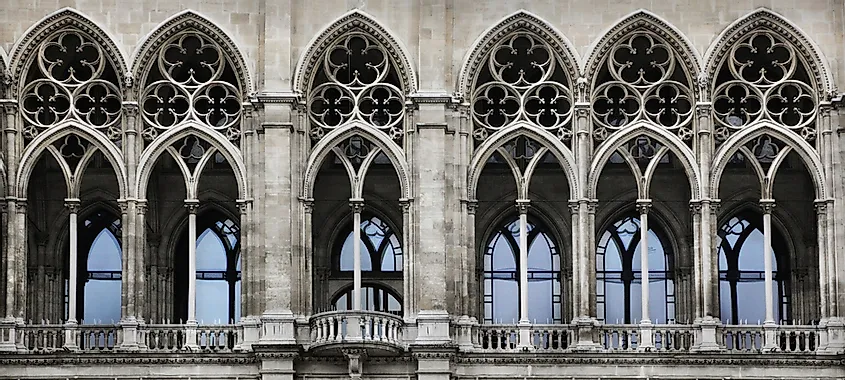
Ribbed Vaulting in Gothic Architecture
The Romanesque style had thick walls and smaller windows to support the downward weight exerted by the tunnel or barrel vaults. This changed with the introduction of rib vaults in Gothic Architecture. The diagonal cross-arched rib vaults assisted the vertical prowess of the building while exerting force outwards and downwards at the end of the vaults, which usually culminated in pillars or were subsumed by the flying buttresses. This prevented the need for thicker walls.
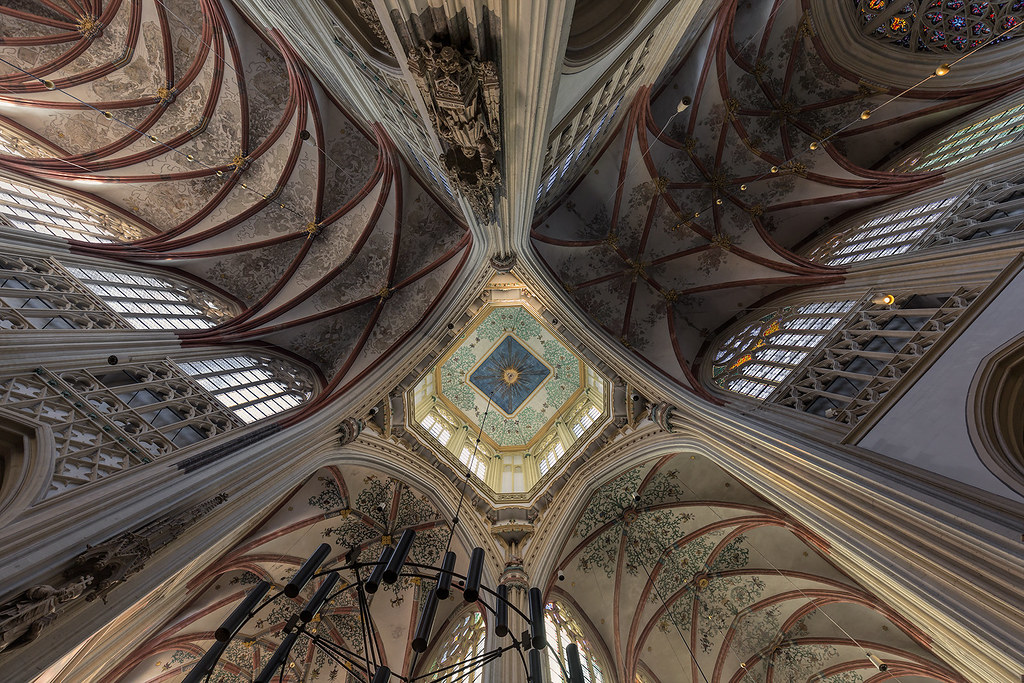
Earlier they were divided into six compartments which divided the weight unevenly between the alternating piers and columns, therefore restricting the space available. It was changed to four compartments for an even weight distribution, eliminating the presence of two extra columns. In the later periods, the aesthetic appeals of tiercons, liernes, and stellar and diagonal ribs came with an innate functionality. Not only were these designs new for the epoch, they could now transfer the weight to the existing columns.
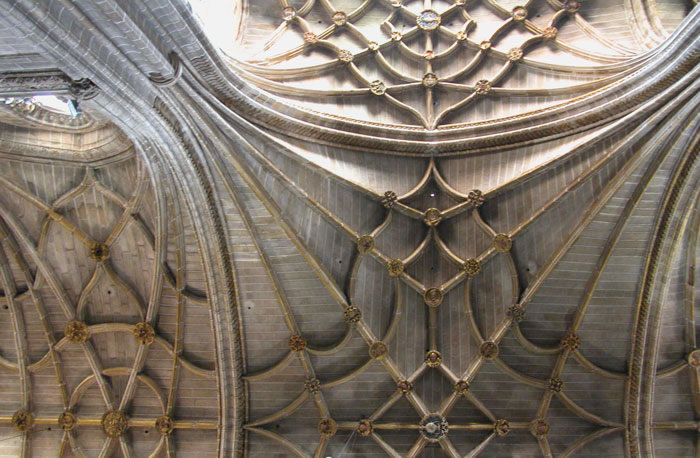
Tracery and Windows in Gothic Architecture
The entire purpose of Gothic architecture was to illuminate the spaces. Hence, one can rest assured you will encounter numerous windows in such a landmark. Through traceries, the windows were divided into multiple panels which assisted in further ornamentation and designs. At first, there were simple lancet windows, depicting biblical figures. It soon transitioned to plate tracery to fluid curvilinear patterns and then lace.
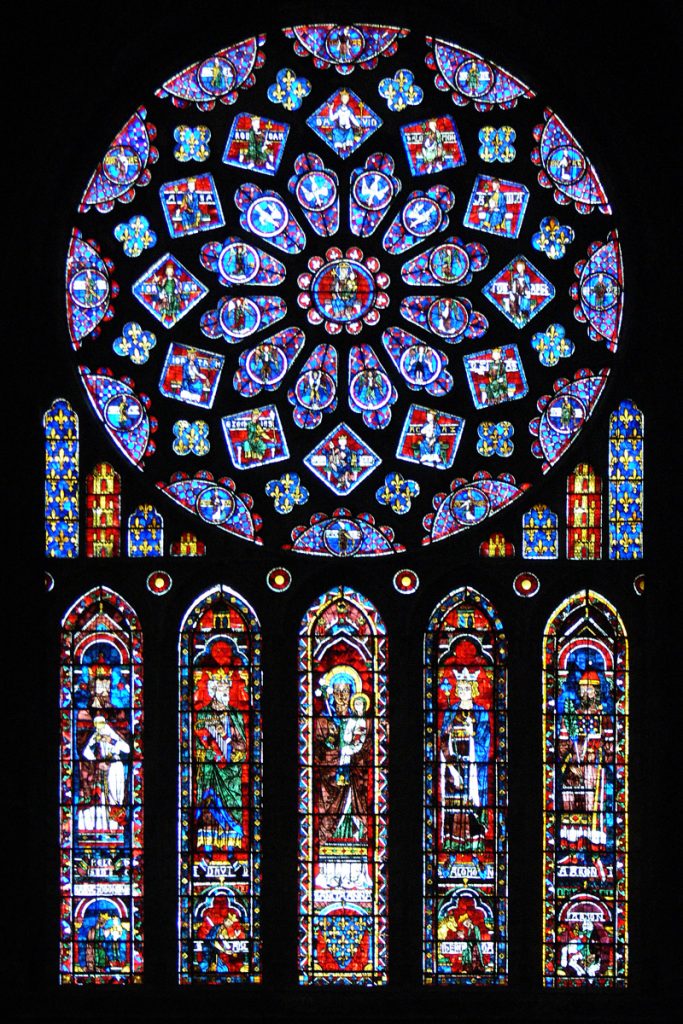
The plate traceries helped curate the rose window in Gothic Architecture along with rectangular and quatrefoil designs. Soon, mullions were included in the windows (during the High Gothic period), dividing them into further narrow sects, each with its unique pattern. The traceries were soon called bar traceries. Although it increased the complexity of the structure, the weight decreased, and could therefore be supported by the thin walls. Through innovations, they were soon a salient feature of even circular windows (often called rose windows). These depicted myriad narratives while tinting the interiors in exquisite colours.
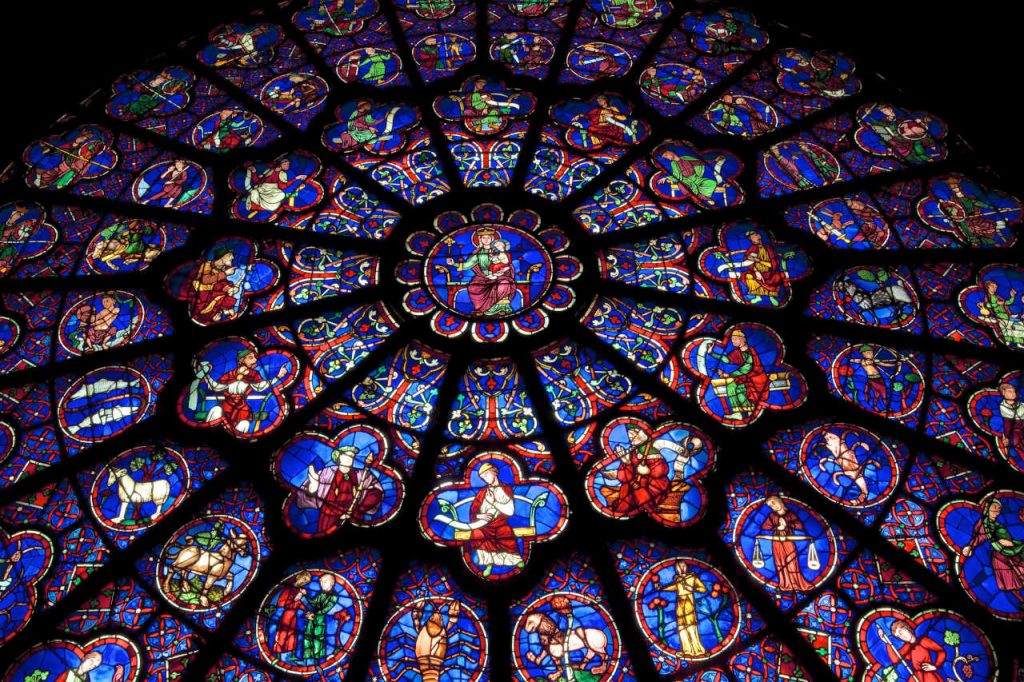
Piers and Columns in Gothic Architecture
The early columns were made in the Romanesque fashion. However, the emergence of ribbed vaulting made it more slender and part of itself. With the use of six-ribbed vaulting, the columns and piers had to be different heights, which changed when the four-ribbed vaulting entered the scene. During the Late Gothic period, half of these columns were subsumed into the building, which provided additional support to handle the immense weight. The resulting piers also became much taller. In some cases, the columns were clustered into a clover pattern, supporting a single dorm. These columns and piers in Gothic Architecture buildings were embedded with intricate designs (rings, flowers, or leaves).
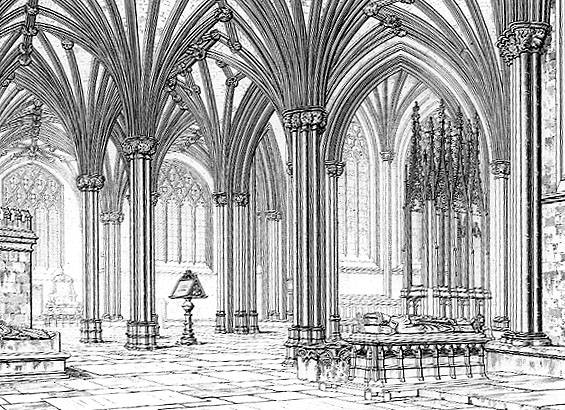
Photo Courtesy – 80 Levels

Hi Ya’ll !!
I love writing about pop culture and all things queer.
Sub Editor at Abir Pothi

